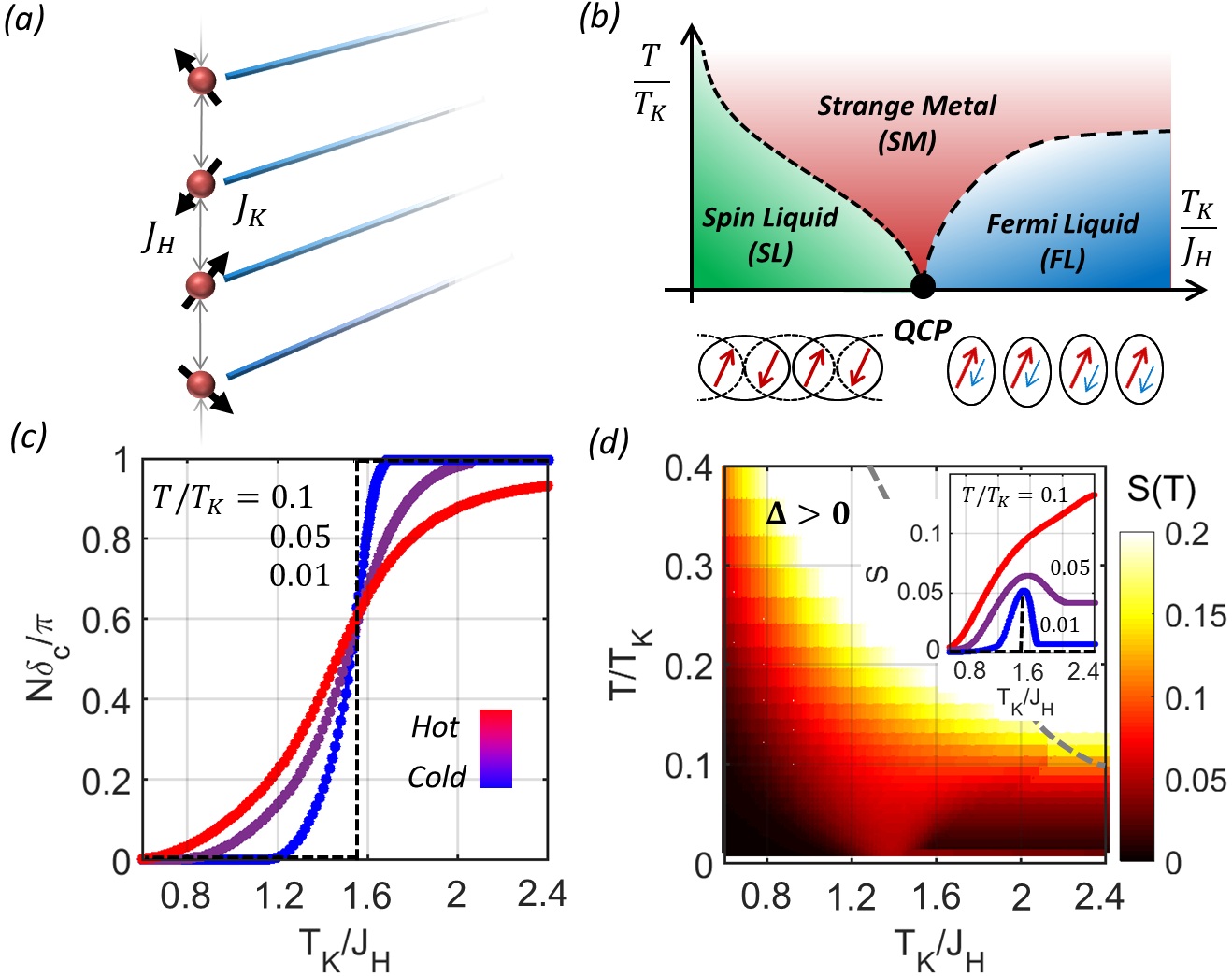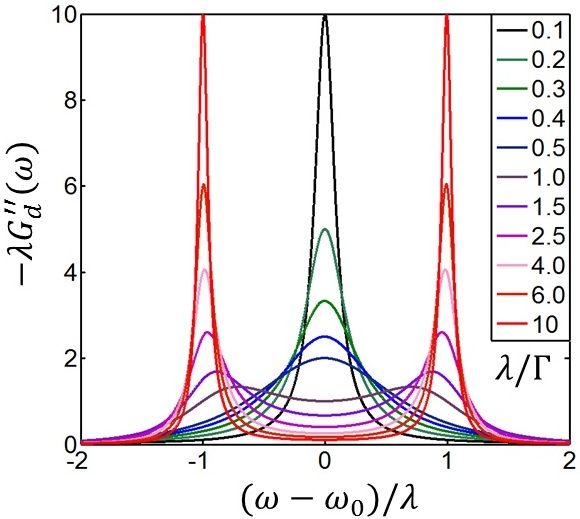Kondo breakdown and Critical Charge fluctuations
Y. Komijani, P. Coleman, , Critical charge fluctuations and &Omega/T scaling at the Kondo Breakdown of Heavy fermion systems, Phys. Rev. Lett. 122, 217001 (2019).

- Kondo screening in heavy-fermion systems is known to increase the size of the Fermi surface, as if each magnetic moment contributes an electron to the conduction band. This is theoretically established by Oshikawa's topological proof and is supported numeruous experimental observations.
- Kondo breakdown is when a heavy Fermi liquid undergoes a change in the size of the Fermi surface due to an abrupt turning off of the Kondo effect. We argue in this paper, based on a interpreting Kondo effect as a many-body ionization phenomena, that at such a quantum critical point, degenerate fluctuaitons on whether or not the spin donates an electron, leads to soft charge fluctuations.
- To show, this we study a quasi-1D Kondo lattice in which each spin is Kondo screened independently. Using a Schwinger boson representation of the spin and in the large-N limit we show that a Kondo breakdown quantum phase transition separates a heavy-Fermi liquid (characterized by the phase shift) from a U(1) spin-liquid.
- The quantum critical point has a finite residual entropy and in addition to critical charge fluctuations has divergent staggered susceptibility and specific heat.
A quantum theory of Lineshapes
Y. Komijani, P. Coleman, Majorana Approach to the Stochastic Theory of Lineshapes, Phys. Rev. B 94, 085113 (2016).

- So, how would such critical charge fluctuations show in an experiment? In this paper, we used the Majorana representation of the spin to develop a diagrammatic quanutm version of the stochastic theory of lineshape by Kubo and Anderson.
- Theory of line-shape is concerned with a two (or multuple-) level system embedded in an arbitrary environment. The spectroscopic lineshape of the transition between the two levels can be used to deduce information about the system.
- The figure shows an expample when a soft charge fluctuations, coupled to a nearby two-level system by a Coulomb interaction. The transition splits as a result of the chaqrge fluctuations. However, if the fluctuations is too fast, it leads to narrowing of the original lineshape.
- Combining these two theories, we have made predictions abou the Mossbauer spectrum at the quantum critical point of heavy-fermions.